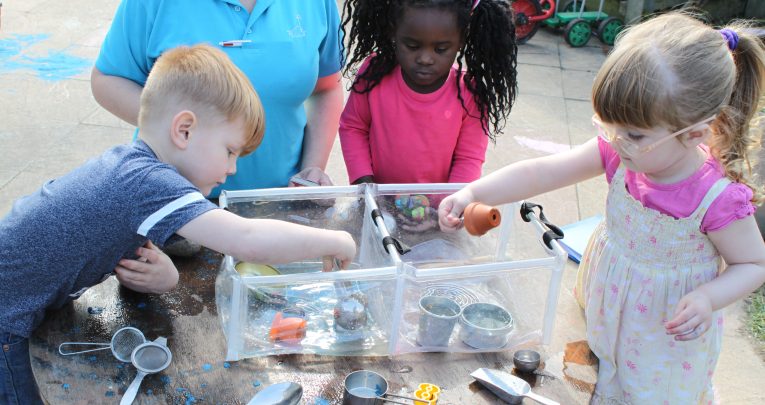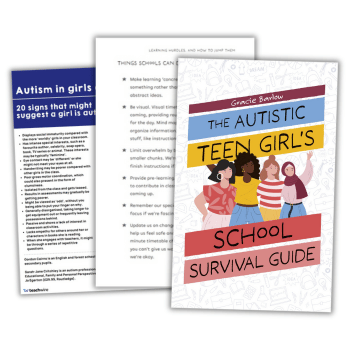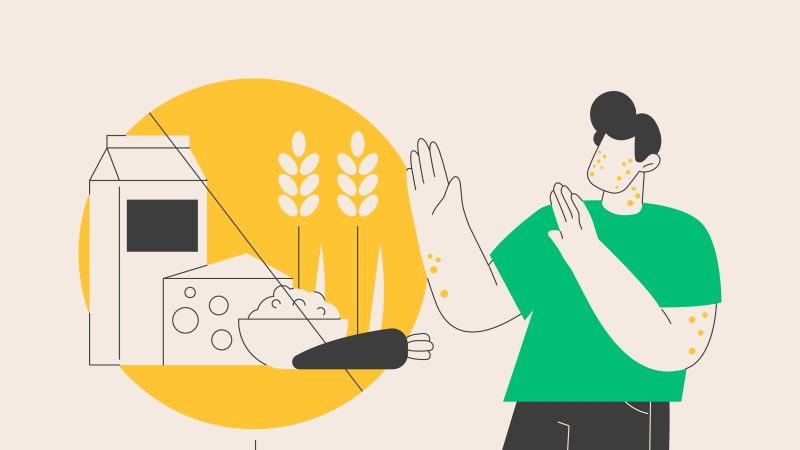Messy play – We need to take its positive impact seriously

Messy play allows children to access a wide spectrum of play and learning opportunities…

- by Sue Gascoyne

Whether you approach it with feelings of resignation and fear or the same childish excitement exhibited by your charges, messy play is an important contributor to young children’s learning and development.
My own journey into messy play started when my daughter was a toddler and I was striving to be a ‘good enough’ parent! I remember that she was happily experimenting with cooked couscous, changing, manipulating and smearing it on a tray while I prepared tea – and that this scene of calm exploration quickly changed when I made the mistake of answering a work call.
Keen to maintain a veneer of professionalism, as a work-at-home mum, I felt unable to contain her play, and a scene of chaos duly unfolded, with tidal waves of squidgy couscous spraying the kitchen… That ill-fated play episode forever set my husband against messy play, as he arrived home to discover me exhausted, wiping smeared couscous off the floor, table and kitchen chairs!
As for me, I knew that messy play must be good, but didn’t really understand its true potential. My understanding has since developed in an array of childcare settings and more recently in play therapy (playtherapy.org.uk/About-PTUK) sessions.
As this adventure has progressed, I’ve found myself returning time and again to messy play’s unique qualities and my mission to understand the what, why and how of messy play, so that we can better understand, appreciate and support children’s interactions.
Under the microscope
The words messy play tend to conjure up visions of gloop, paint or couscous. In fact, Gburczyk (2012) suggests three distinct types of messy play resources, which helps us recognise children’s differing needs and aversions (as well as our own), and shape our understanding of the potential of specific resources:
| 1. | Wet and sticky – eg wet sand and gloop |
| 2. | Dry – eg sand and wood shavings |
| 3. | In-between – eg play-dough |
The open-endedness of messy play materials and the wide variation in how they can be used, respond to touch and appeal to children, means they have the potential to benefit children in a multitude of ways. For example, during play-based therapy, children with emotional and behavioural problems may choose to manipulate clay and paint to vent anger (West, 1992; Kalu, 2002). Hastings’ (2012) similarly noted that the greater the child’s emotional difficulties, the wetter the child’s messy play.
These findings sparked a two-year study of four- to seven-year-old children attending play therapy for emotional and behavioural problems, to explore whether the different qualities and characteristics of messy play resources influence how they are used, together with the types of emotions they best support.
The findings
Far from being one-dimensional, there appears to be a continuum of messy play interactions in play therapy (Gascoyne, 2015; Hastings, 2013; Case, 1990). The first of these non-linear ‘stages’ involves children exploring and experimenting with mess. Once children have freely played with their mess they may then begin to contain, clear it up or even harness it, as they turn their mess into a positive.
The containment and clearing up, or even prevention of mess – by, for example, choosing to wear aprons, or covering a table – can represent positive indicators of a child beginning to control their mess. The final discarding stage occurs when the child no longer needs their mess. Although rooted in a therapeutic context this does have implications for practitioners, who may feel that the weight of preparing and clearing up the mess falls on their shoulders.
Reflection
Consider how often the ‘mess fairy’ magically removes all traces of messy play without children being able to take control of this cleansing process; decide what to discard and what to keep; return to and explore change; and ultimately experience a sense of agency and closure.
Many children’s therapeutic messy play is characterised by a transformation in its colour and sparkliness. A pictorial analysis seems to suggest that a transformation from dark brown, opaque to pure white or colourful, sparkly creations coincides with an improvement in emotional and behavioural issues, a potential relationship that warrants further investigation.
Furthermore, children appear to use messy play as a tool for expressing, understanding and managing their anger and emotions, receiving vital sensory feedback and developing mastery and control. The chaotic potential of messy play interactions, whether they involve a flooded floor, slopped cornflour or smeared clay or paint, seemed to communicate to the author a sense of the chaos, fragility, and despair of their life.
Trending
Lessons learnt
Before you reach for a colour chart to reflect upon the colour of a child’s mess or the emotions they are venting, it’s worth emphasising that play therapy is a specialist intervention that takes place within the confines of a unique environment and relationship, and cannot therefore be universally applied.
However, working in mainstream settings it’s important to consider what, if anything, these therapy-based findings mean for early childhood education and care provision. With trauma often hidden, practitioners may be working with children whose fundamental physical and emotional needs mean they are not ready to learn because they are in a fight or flight state.
Such children need time and plentiful opportunities to work with, return to and transform sensory-rich resources, like those employed in messy play, in a safe and non-judgemental environment. Practitioners have a key role to play in helping to make learning environments ready for these children by planning different types of messy play and use.
Reflection
Consider as a team what types of messy play interactions you offer. Do they include wet and sticky, dry and in between? Do children have opportunities to change, store and return to their creations? Are children able to take control of clearing up? Are value judgements passed on the mess created, such as ice-cream shades being preferable to pooey-brown?!
Exploring in a whole-bodied sensory way is not only natural but is how children learn about the world and themselves. If children haven’t had adequate opportunities for sensory exploration through the environment and loving relationships, they will revert to ways of engaging with resources typical of infants and Sue Jenning’s Embodiment stage, such as smearing and immersion. With this in mind, the use of multisensory approaches will support learning by increasing children’s ability to self-occupy, and help develop a sense of agency, resilience and mastery in early childcare settings.
If practitioners recognise the potential of messy play by providing a range of textures and colours, children can access a wide spectrum of play and learning opportunities to suit their changing needs, interests and scientific thinking. Key to this will be recognising the importance of pedagogical influence, be it practitioners having opportunities to explore messy play first-hand, so they recognise its value as more than simply fun, to being aware of our own attitudes to mess and their implications for children accessing enriching messy play experiences.
Click this link to read Sue’s full paper, ‘Patterns and Attributes in Vulnerable Children’s Messy Play’, in European Early Childhood Education Research Journal 25 (2): 272-291 (Oxford: Routledge, DOI: 10.1080/1350293X.2017.1288019).
The power of play
Messy play benefits children by:
- being restoring and calming
- supporting communication and self-expression
- providing sensorial, experiential and regressive experiences
- developing containment and attachment
- increasing confidence, control, mastery and transformation
- offering enrichment and enjoyment
Sue Gascoyne is an author, play therapist and early years researcher.
Main image credit: Sue Gascoyne/Springlands Nursery, Colchester







